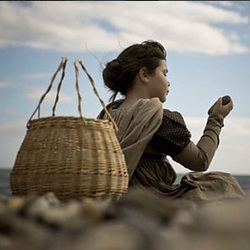
 Mummy and I have been doing a course at university, called Dino 101. Every day, we get to watch a video, and some have questions and some don't, and sometimes we even get to build a dinosaur on the computer. I'm learning lots about dinosaurs. Did you know that the vertebrae in your neck are called cervical vertebrae? And the ones in your back are called dorsal vertebrae. And some dinosaurs had tummy ribs called gastralia.
0 Comments
 This is a fossilised feather from an archaeopteryx, and it is x-rayed. There is a palaeontologist at the University of Manchester, and he's called Dr Phil Manning, and he x-rayed the feather to find out what colours archaeopteryx feathers were.  And he found out that they were black and white! The x-ray light was brighter than a million suns! That is a lot - a million suns! You can read more on the University of Manchester website: http://www.manchester.ac.uk/aboutus/news/display/?id=10202 (edit from Mummy: bottom image taken from there, top image taken from http://blogs.rsc.org/ja/2013/06/13/plumage-patterns-in-a-150-million-year-old-bird-revealed/ )  I've been watching a programme about the ice age. It's called Ice Age Giants, and you can find it on the iPlayer from the BBC. The presenter is a lady called Professor Alice Roberts, she works at a university. There are three programmes. My favourite bit was the cave bear. The Mummy bear and the cub were going deep in the cave, but then a cave lion came and found them, but the Mummy cave bear killed the cave lion and protected her cub. There was lots about a giant sloth as well, but it wasn't called a megatherium, it was called the shasta giant sloth. And about Neanderthals and how they became extinct. There are lots of museums and places in the programme that I want to go to, so many that I can't even count them. There was a place near San Francisco were the stones were rubbed smooth by mammoths having a good scrub. I would love to travel all around the world and see all these places. You can read more about the programme here: http://www.bbc.co.uk/programmes/p018c9fm - and you can watch it for another five days. It is for grown ups, but I liked it! (Edit from Mummy: image taken from BBC link above.) Trilobite eyes are really cool, and I really like them. I've made a film all about trilobites, and you can watch it if you want, and I hope you like it!  We have watched a Mary Anning programme. We're going to tell you all about it. It was a programme about lots of famous people who lived a long, long time ago. In this programme, there were five people: Isambard Kingdom Brunel, he was an engineer; Alexander Graham Bell, who invented the telephone; Florence Nightingale, she was a nurse; Harriet Tubman, she was a slave, but she escaped and helped other slaves escape, and Mary Anning. The programme got a few things wrong, though. It did say that Mary Anning was struck by lightning when she was 15 months old, but the baby in the programme was only a few months old. And in the programme, she was a grown-up when she found the ichthyosaur, but she was really only twelve years old, and she found it with her brother Joseph. AND it was a whole one, and not just a head. The programme was really good, but I'm sad that they got some things wrong. When they do stories about real people, then they should get it right! (Image taken from http://www.bbc.co.uk/programmes/b01d8rlf) Yesterday, I was looking for fossils in the walls on my way to school. I didn't find any, but Mummy showed me this video - fossils really are EVERYWHERE! |
AuthorHello, my name is Toby. I am five years old, and I want to be a palaeontologist. I really like fossils, so I'm writing down everything I do with fossils! My Mummy is doing the typing until I'm a bit older, but she writes everything I say. Archives
September 2014
Categories
All
|
 RSS Feed
RSS Feed
